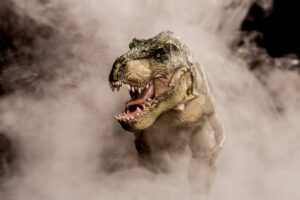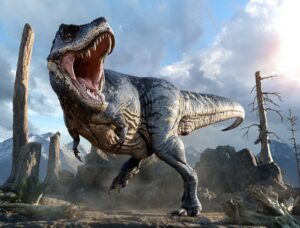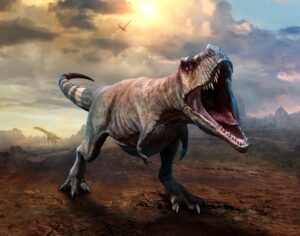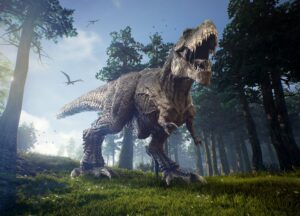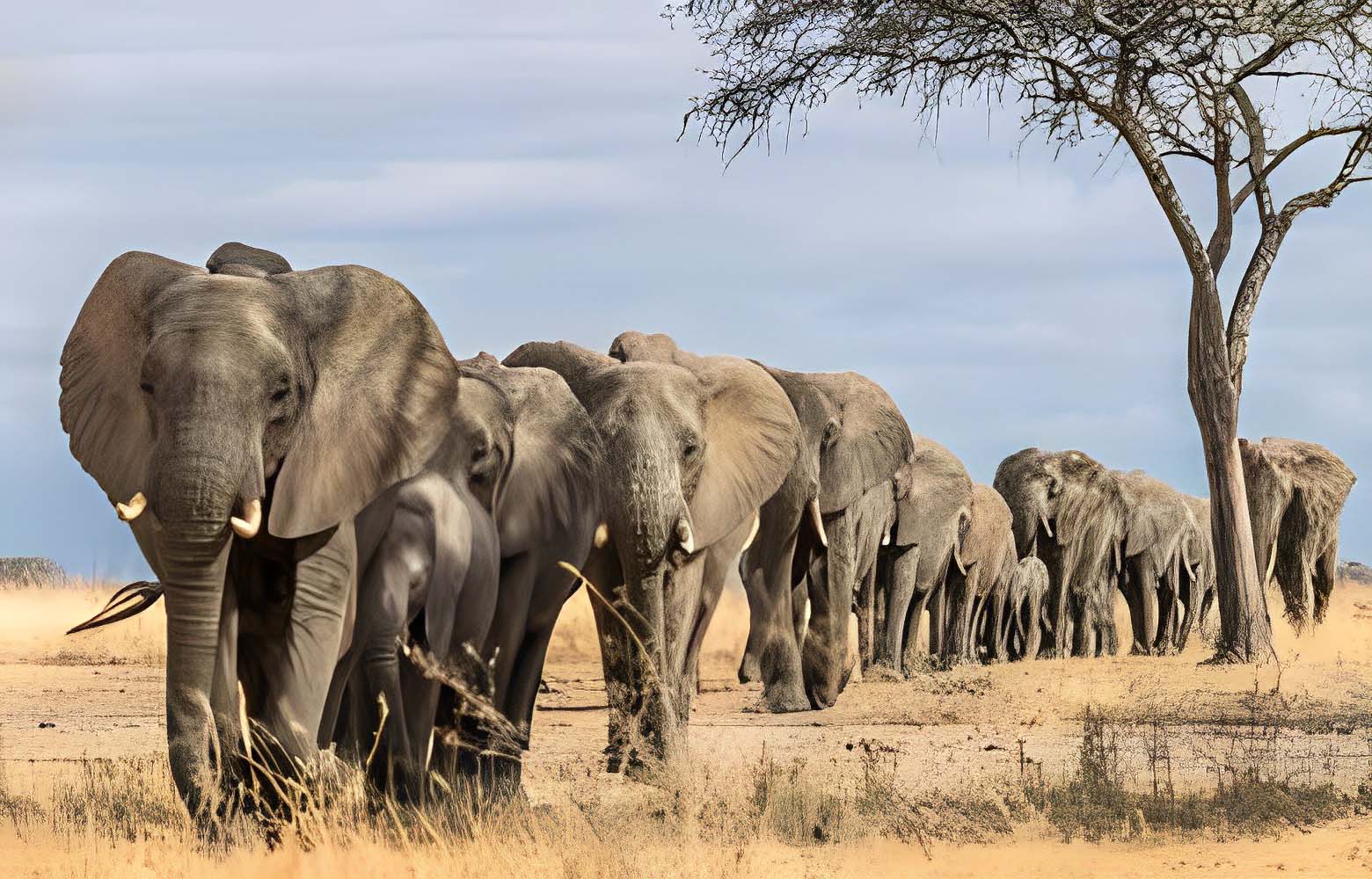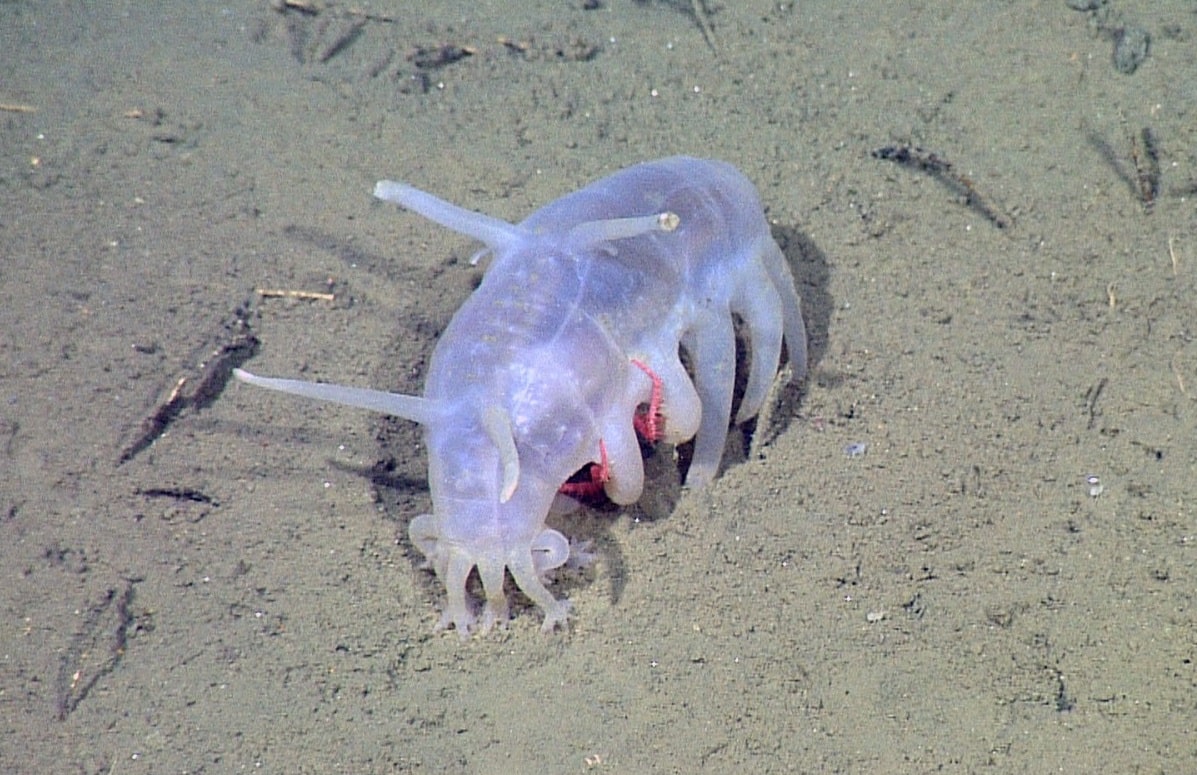T-Rex Dino Strength Comparison to the other Dinosaurs
Today we’re going to take a look at the T-Rex’s size, strength, bite force, speed, and much more, then compare it to other large theropod dinosaurs that existed around the same time, to see if the T-Rex really is as strong as some people would believe!
T-Rex History & Appearance
Let’s start with a little history lesson on who the T-Rex is, shall we? Well, The Tyrannosaurus Rex, often simply referred to as T-Rex, is a creature that lived during the Late Cretaceous period, roughly 68 to 66 million years ago. This would place it towards the end of the Mesozoic Era, known as the “Age of Dinosaurs.” The discovery of T-Rex fossils has primarily been concentrated in North America, with the majority of findings in what is now the western United States and Canada.
Also, in terms of discovery, the first T-Rex specimen was actually unearthed in 1902 by the pioneering American paleontologist Barnum Brown in Montana! The T-Rex was a colossal predator, with physical attributes that made it stand out in the crowd. One of these physical attributes was its skull, which was large and powerful and supported by a robust neck that allowed it to deliver powerful bites. Also, the T-Rex’s binocular vision, with eyes positioned forward on its head, provided it with a sense of depth perception, making it an effective predator.
This forward-facing vision likely helped T-Rex track and pursue its prey, much like modern predators! The size and position of its eyes suggest that it possessed keen eyesight, further enhancing its hunting capabilities. In addition to its formidable head and eyes, T-Rex had another remarkable feature: its tough, scaly skin! The skin of this dinosaur was covered in scales, much like modern reptiles.
These scales likely provided protection against environmental factors and potential injuries during combat or hunting. Appearance-wise, the coloration of the T-Rex actually remains a subject of scientific debate and speculation. While it is challenging to determine the exact coloration of dinosaurs, some researchers have suggested that they could have had color patterns similar to modern reptiles or birds!
Size and Weight of T-Rex Dino
In terms of size and weight, this colossal creature was a true giant of its time. Measuring up to 12.3 meters (40 feet) in length and standing at about 4 m (13 feet) tall at the hips and weighing between 5,000 – 7,000 kg (11,000 and 15,500 lbs). This places it in the same weight class as large African elephants, some of the largest land animals alive today! However, back in the age of dinosaurs, the T-Rex was not without its competition. One notable contemporary was the Spinosaurus, which inhabited North Africa.
While estimates vary, Spinosaurus potentially surpassed T-Rex in length, with some suggestions reaching up to 16 to 18 meters (52 to 59 feet). This would have made Spinosaurus one of the largest carnivorous dinosaurs in history. In South America, another colossal theropod called Giganotosaurus held sway. With estimates indicating a length of around 12 to 13 meters (39 to 43 feet), Giganotosaurus was a serious contender in the size department.
Some estimates even propose that it might have rivaled or slightly exceeded T-Rex! Also, the Allosaurus, a slightly earlier dinosaur from the Late Jurassic, was also a significant predator. Though not as massive as T-Rex, it was still an impressive hunter, reaching lengths of up to 9 meters (30 feet). Knowing all of this, it is safe to assume that the Tyrannosaurus rex is in the top 10% of the largest dinosaurs that ever lived.
Strength of Tyrannosaurus rex
Despite their miniature size relative to their overall body, the Tyrannosaurus rex’s arms were actually surprisingly powerful. Paleontologists estimate that these seemingly puny appendages could exert an astonishing force, capable of curling up to 195 Kilograms! (430 pounds). One prevailing theory suggests that the T-Rex’s robust arms served a practical purpose in its daily life. Another intriguing hypothesis involves the role of these arms in hunting.
Some scientists propose that the T-Rex could have employed its arms to help immobilize prey. Picture this colossal predator pinning down a struggling victim with its formidable arms, while its powerful jaws moved in for the kill. This scenario paints a vivid picture of the T-Rex’s predatory strategy, combining brute force with its iconic bone-crushing bite. Comparatively, when examining other large theropod dinosaurs from the Late Cretaceous period, T-Rex’s arm strength becomes particularly notable.
For instance, the Spinosaurus had longer arms in relation to its body size. However, they were more adapted for grasping and possibly swimming, as it is thought to have been semi-aquatic. Giganotosaurus, on the other hand, had arms that were slightly longer than T-Rex’s in proportion to its body.
This would mean they had a higher muscle density in their arms and hence would be able to lift heavier weights. Also, the Allosaurus had relatively longer and more functional arms compared to T-Rex. These arms were equipped with three-fingered hands that were likely used for grasping and manipulating prey!
T-rex’s Prey Speed
One of the most striking aspects of the T-Rex’s physiology was its hip and thigh muscles. It’s believed that these muscles were likely proportionally larger than those of any existing animal. In fact, the limb “antigravity” muscles of T-Rex may have rivaled, or perhaps even exceeded, the size of those found in ratite birds. Ratites, which include species like ostriches and emus, are known for possessing the most muscular limbs of any extant, currently living animal.
This comparison provides a vivid illustration of the sheer power and musculature that T-Rex possessed. The enlarged hip and thigh muscles of T-Rex were fundamental for its locomotion and predatory behavior. They allowed the dinosaur to support its colossal body weight and provided the strength necessary for activities like standing, walking, and, most crucially, hunting. This robust musculature likely enabled T-Rex to deliver powerful lunges and strikes in pursuit of prey.
Moreover, the enormity of these limb muscles suggests that T-Rex was an incredibly efficient and powerful mover. This was particularly important for a predator of its size, as hunting and capturing prey necessitated bursts of energy and agility. In terms of speed, Recent scientific studies and biomechanical simulations estimate that T-Rex could reach speeds of about 32 to 40 kph (20 to 25 mph) in short bursts. Compared to other theropods of similar size, T-Rex was likely among the fastest.
For example, the Allosaurus was slightly slower, possibly reaching speeds of around 30 kilometers per hour (19 miles per hour). In contrast, some smaller theropods were extraordinarily agile and faster over sustained distances. Velociraptors, which were much smaller than the T-Rex, were highly adapted for speed and agility. While the T-Rex may not have been the fastest in terms of top speed, its combination of size and speed made it an extremely effective predator.
Its sheer mass, coupled with the ability to reach high speeds in short bursts, gave the T-Rex a significant advantage when it came to hunting and capturing prey.
Bite Force of T-Rex
The jaw was a theropod’s main weapon, and for the T-Rex, its bite force was its biggest strength! It featured a pair of large, powerful jaws filled with massive, serrated teeth. These teeth were one of T-Rex’s most distinctive features, with some reaching lengths of up to 30 centimeters (about a foot) or more. They were curved and razor-sharp, perfectly designed for tearing through flesh and bone. The bite force of T-Rex was also nothing short of staggering.
Recent studies estimate that this apex predator could exert a bite force ranging from approximately 34,500 to 57,000 Newtons (7,800 to 12,800 pounds per square inch). To provide a frame of reference, let’s compare it to some modern-day predators. A large adult male lion, known for its powerful bite, exerts a bite force of about 2,680 Newtons (600 pounds per square inch).
This means that T-Rex’s bite was roughly 10 to 20 times stronger than that of a lion! Comparatively, other large theropods, such as the Allosaurus had a bite force estimated at around 20,000 Newtons (4,500 pounds per square inch). While still impressive, it pales in comparison to T-Rex’s mighty jaws. Also, the Spinosaurus had a more specialized diet, potentially consisting of fish. As a result, its bite force was not as high as that of T-Rex.
Overall, the T-Rex may not be the largest, strongest, or the fastest. But it undoubtedly had the deadliest bite force amongst all animals, whether they are extant or extinct!
